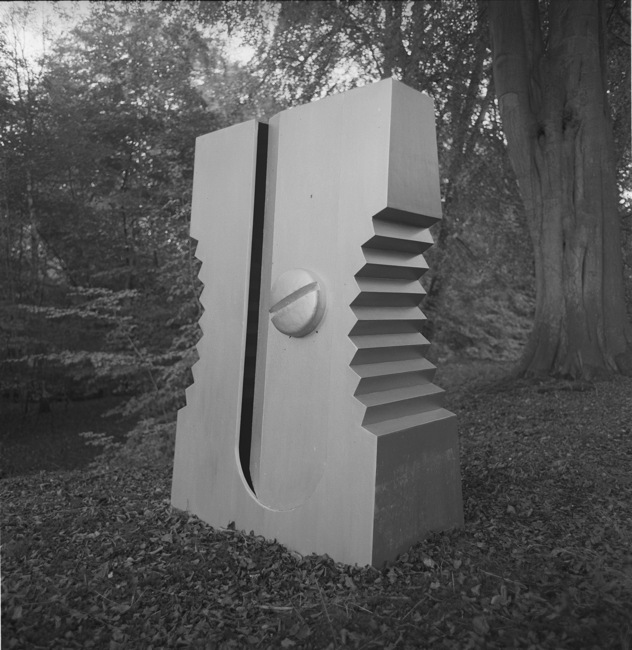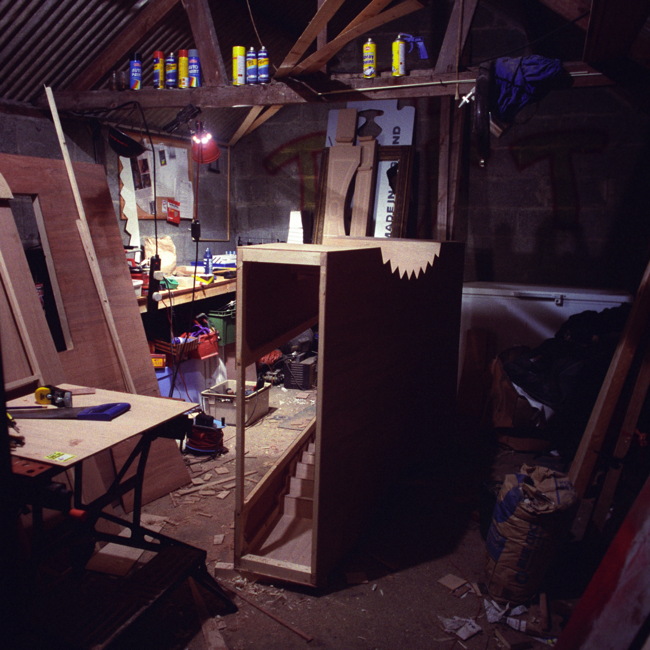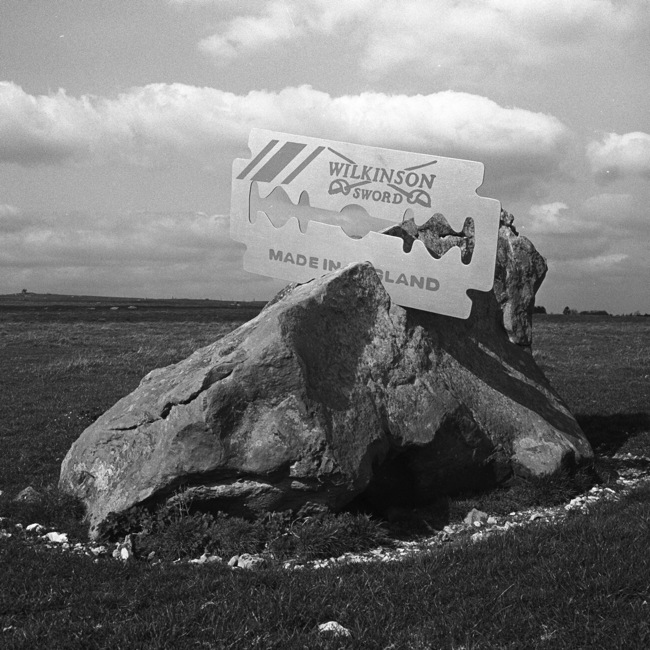Mr Big Stuff |
 My giant pencil sharpener, pictured in Savernake Wood, Wiltshire, sometime in 1993. It was completed in the summer of 1992 and I still have it after all these years. It has stayed together quite well, despite being stored mostly in an open-fronted barn. It always pays to use marine ply. Height is approximately 6'6" The germ of this concept began in the late eighties and mirrors a flush of creativity that had begun with my writing in 1987. I hadn't actually finished my first book by now, and indeed, I was starting on a twin-pronged strategy to move into being a conceptual artist/photographer and/or writer. I had various conceptual ideas about where my direction as an artist/photographer would take me (I codenamed all this Project Cucumber - I still have the file somewhere) and the pencil sharpener was the main prop in an idea about incongruity: I would build my pencil sharpener, then travel around the country and photograph it in various locations: Highlands of Scotland, beach at low tide, central London, Dungeness - I even had an idea that the eighth picture in the book of twenty would be without the sharpener as a kind of 'negative sharpener space'. I would publish three or four of these photo books every year until I beeped on someone's radar, which I envisioned might be between five and ten years. Long game. It all came to nought as the writing progressed, so the only part of the project that remains was the sharpener and the one picture above. I constructed the sharpener to a 1:50 scale so it would fit comfortably on the roof rack of my then-owned Peugeot 505 estate.  The only construction picture I have, taken in my garage at Brown's Lane, Great Bedwyn, where I used to live. The garage was flattened when we built the extension, so this is where the house is now. I don't know who lives there today, but downstairs in the office was where I wrote my first six books. The sharpener was built almost wholly of marine play, built from my plans drawn by scaling up a Stadeler pencil sharpener. If you look on my work desk in the picture, you can see a pattern for the 'thumb hold serrations' which were all individually cut, glued and pinned into place. While the wooden part of it was quite straightforward, the head of the screw required a different technique. First I cut a 1/4 circular shaped quadrant out of ply, then rotated that around a large blob of clay to give the screw head shape. After that, I cut out the slot very carefully and smoothed and sculpted the head as best as I could. I then made a plaster of Paris mould, and when that had dried, I scooped and washed out the clay so I had a proper mould. Finally, this was filled in with glass fibre matting and resin, painted, wrestled from the mould - and there you have it. Luckily, I had spent a lot of time at school doing woodwork, technical drawing and building a canoe from glass fibre, so none of this was very alien - you just have to be quite diligent and accurate over cutting and shaping, be ready to discard any pieces that go wrong, and take your time. Slow wins prizes. I used only hand tools in its construction. The final sharpener was sanded down, cracks filled with filler and then painted in primer and silver paint. I was going to build the interior conical section, but eventually did not.  But... the Pencil sharpener was not the first oversized object I constructed. The previous year I completed a much simpler project comprising of a single sheet of ply, cut to size and then painted. To ensure there was a perfect fit to the rock, I had to make a template on site, cut the blade at home and then return with the whole thing. To keep it in position, there was a hinged flap at the back that folded down and could be laden with stones. You can just see the top of one of those stones peaking through the gap in the middle of the blade, which is about 4' wide and is in my garage somewhere today - I suppose it would still fit, so long as the rock hasn't grown. This was taken in the winter of 91/92 at Piggledene in Wiltshire, the rock one of the 'grey wethers' that dot the slope of this small National Trust property. The reserve is on the A4 halfway between Marlborough and West Kennet, the stone in question quite a way up the slope, likely at 51.421018, -1.801406 Content for Jasperland, June 30th, 2020 |